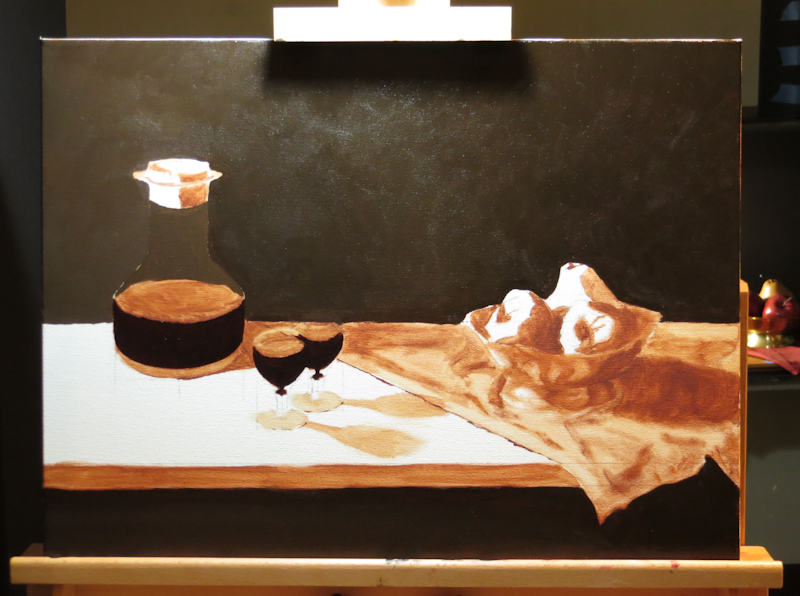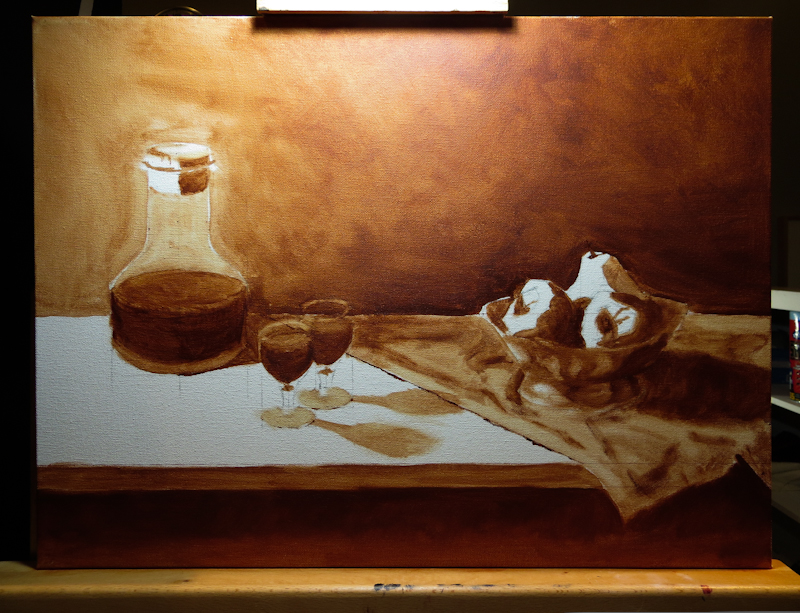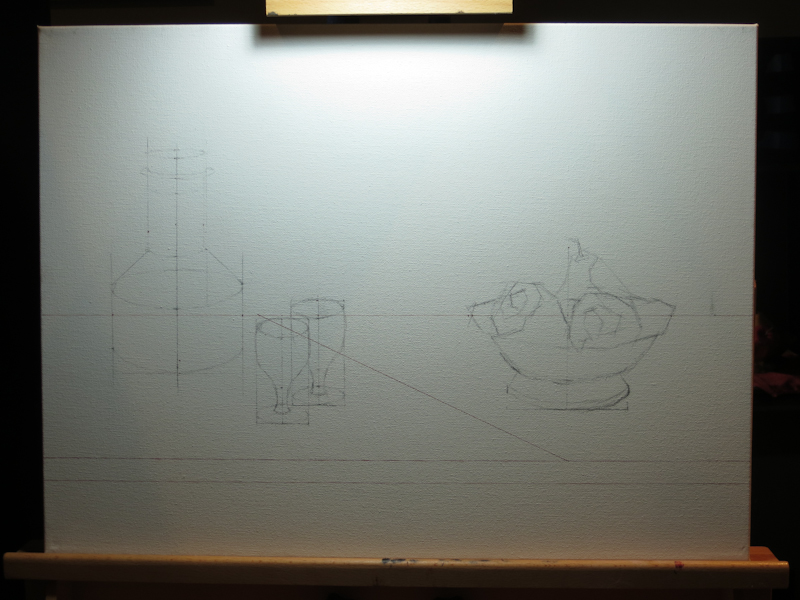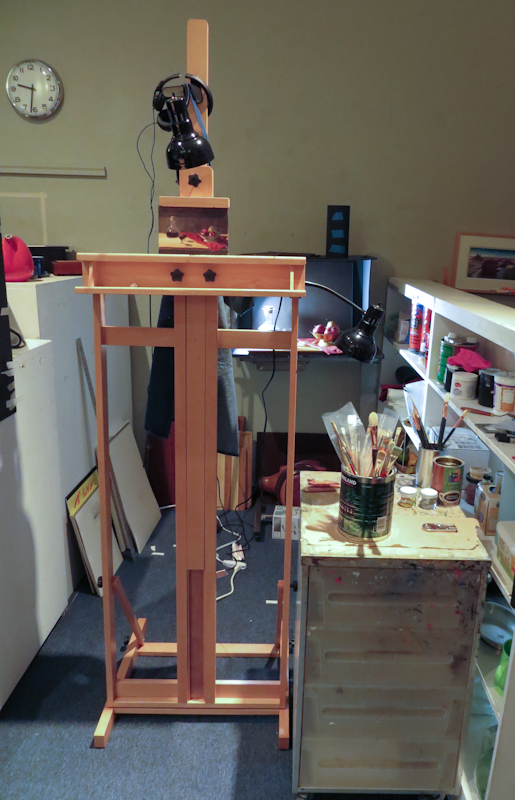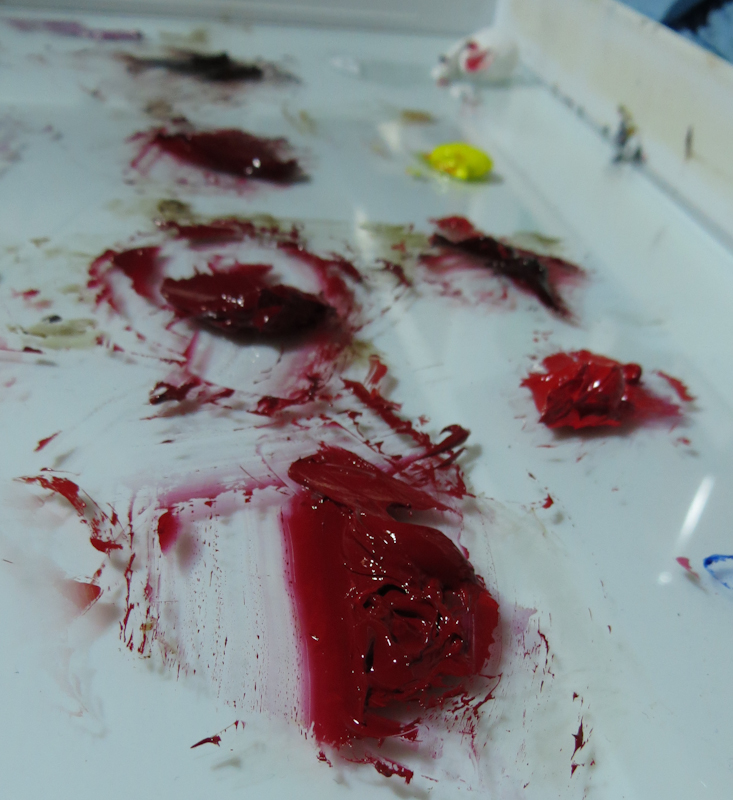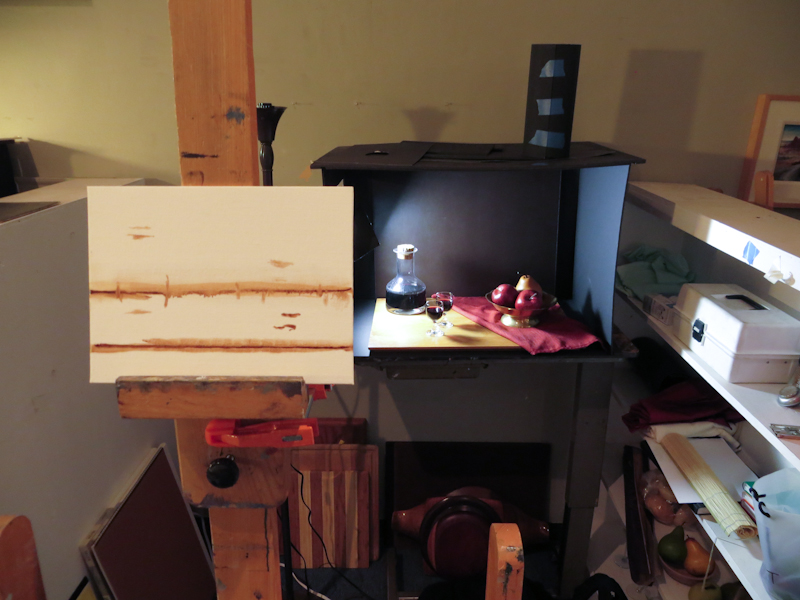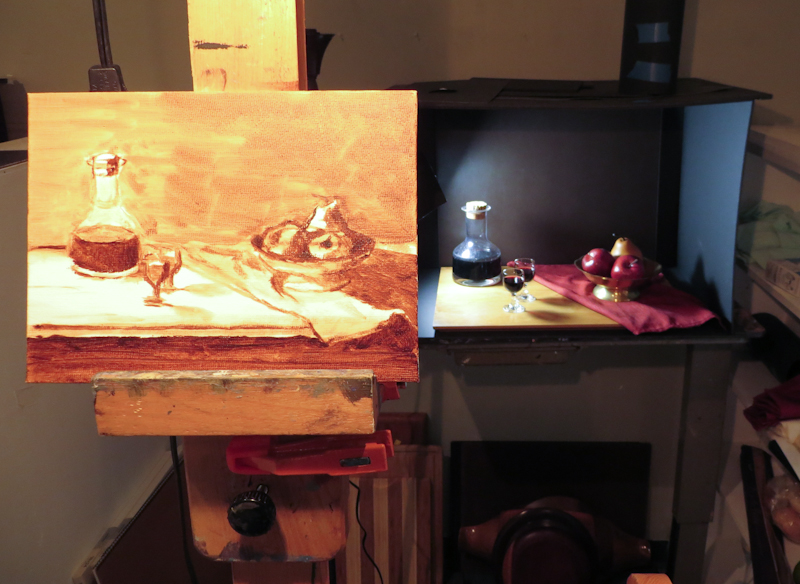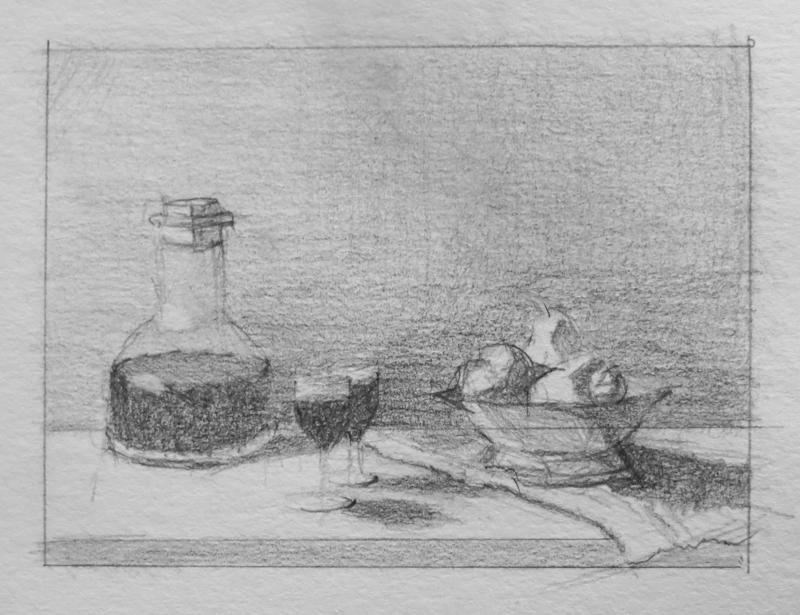Today I mixed up some deep burgundies for the decanter and the wine glasses. I started with Permanent Alizarin Crimson, then mixed in some French Ultramarine to move more towards violet, then darkened the mixture with Burnt Umber.
I’ve been working to establish my darkest darks so that I will have some reference for my shadows and mid-tones. Soon I will need to nail down the other end of the scale by finding the light mid-tone value for the tabletop. You see, I need to reserve white for the specular highlights – when the painting is done, nothing will be white, except for the small reflections on the glass and the fruit. This means that the table top will need to take on a value more like the cloth but then the cloth will have to go darker, which will push the shadow on the cloth almost to black. When I lose white, the entire value range will compress.

